Know before you go…by checking out these top 10 cool Joshua Tree National Park facts. Learn whether the Joshua Tree is actually a tree, get the lowdown on furry creatures of the park, find out which murderer got off the hook in the park and learn about some seriously weird sculptures.

After devouring this article, be sure to also check out :
- A full guide for how to plan a Joshua Tree trip.
- A guide for how to spend an action packed day in Joshua Tree National Park.
- Cool and artsy things to do in Joshua Tree town.
- 13 stunning Aribnb Joshua Tree cabins and also 13 more retro glamping listings for Joshua Tree.
- The best hiking trails in Joshua Tree.
- If you are flying rather than driving to Joshua Tree, check out our guide for the airports closest to Joshua Tree.
- A full guide for camping in Joshua Tree.
- A full plan for doing both Joshua Tree and Death Valley.
- Tips for the best time to visit Joshua Tree.
10 Fun Joshua Tree National Park Facts
This Joshua Tree trivia won’t tell you everything about the park, but it will give you some interesting factoids that will inform you trip…and amaze your friends at cocktail parties. Let’s dive in.
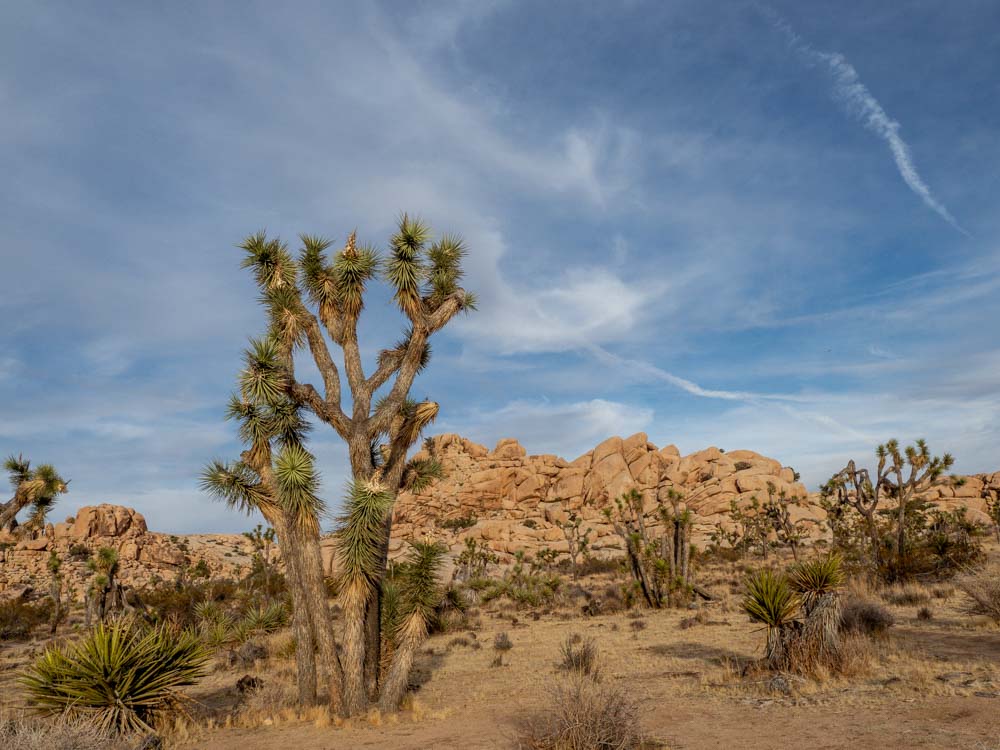
1. The Joshua Tree Isn’t Really a Tree
Those Joshua Trees? Yea no, they aren’t really trees.
The Joshua Tree is actually a yucca plant and is in the the same subgroup that includes flowering grasses and orchids. It grows primarily in the Mohave Desert, which includes Joshua Tree National Park, but you can also sometimes find them in the Sonoran Desert, hanging out with the Saguaro cactus. They are a slow mover, growing just 1-3″ per year. Based upon that growth rate, some researchers think that the average lifespan for the tree is 150 years.
2. The Mormons Named the Tree after the Biblical Joshua
The trees were named as such by the Mormons.
The local Cahuilla refer to the trees as “hunuvat chiy’a” or “humwichawa”. But more recent legend has it that when Mormon immigrants made their way across the Colorado River, they named the tree after the biblical Joshua. They saw the outstretched arms of the tree as a vision of supplication, guiding the westward bound pioneers, just as biblical Joshua helped lead the exploration of Canaan.
Exhausted pioneers also named Death Valley, which you can learn more about with these 10 fun Death Valley facts. And yet more exhausted pioneer also attempted the Donner pass, learn more with these facts about the Lake Tahoe area.

3. Joshua Tree National Park is Big and Wild
Joshua Tree National Park is sooooo much bigger than what you can possibly see on a visit.
Joshua Tree National Park covers 1,235 square miles and is the second largest National Park in California, after Death Valley. What we as visitors see is only about 15% of the park area. The remaining 85% is managed as wilderness. While there are some backcountry trails that go into that wilderness, the landscape and climate are pretty forbidding and it takes a pretty hardy hiker to handle it. So, those lands remain flargely untouched.
4. It took Joshua Tree 58 Years to Become a National Park
Gaining protected park status took a generation.
For 5,000 years, people have been living in the regional that now makes up the park. However, it was with the establishment of roads and mining in the 1920’s, that the fragile landscape began to feel the pain of human habitation. Minerva Hoyt, a southern belle and desert plant lover became concerned when she observed the cactus being destroyed. She started the Deserts Conservation League and lobbied hard for National Monument protection which happened in 1936.
But it took until 1994, before the land was elevated to National Park Status. This is meaningful because National Park status convers a higher level of conservation status and more resources.
5. Joshua Tree Has 57 Mammal Species
There are a surprising number of furry beasts in JT.
For a landscape that looks empty, Joshua Tree has a LOT going on. In fact, on my most recent visit, coyotes were just wandering around, crossing the road in front of my car as if they owned the place.
Well, they do actually own the place.
Coyotes are very resilient creatures, but they aren’t the only mammals in the park. The ones that do well there are typically fairly small, burrowing and nocturnal. This incudes rodents like an assortment of squirells, mice, gophers and rats. There are also jackrabits and cottontails. And of course, there are 16 species of bat. For larger mammals, you’ll occasionally find a mountain lion, bobcat, black bear and that cheeky coyote.
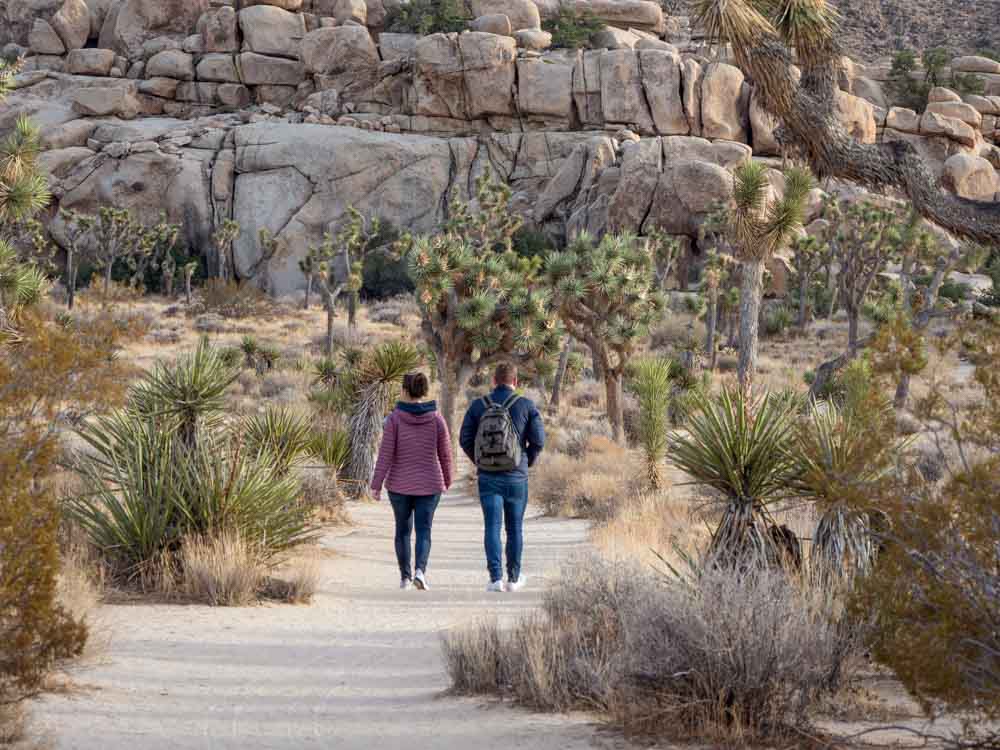
6. Joshua Tree is Actually 3 Different Ecosystems
Joshua Tree has quite a variety of terrain.
Joshua Tree sits as the confluence of three different ecosystems. There’s an arm of the Colorado Desert (which is primarily in southeastern California and southern Arizona) that sneaks into southeastern part of the park. This area is characterized by the ocotillo plants and cholla cactus.
The northern part of the park includes southern boundary of the Mohave Desert, which also encompasses Death Valley National Park and Las Vegas. This area is where you’ll find the namesake Joshua Trees.
The western part of the park touches the San Bernardino Mountains. This 4,000 foot elevation houses Califonia juniper and pinyon pine trees.
7. Joshua Tree is a Dark Sky Park
It gets dark in them thar hills.
While the southern boundary of Joshua Tree does get some light pollution from Palm Springs, the northern and eastern reaches of the park offer some great opportunities for star gazing. The Park has supported efforts to update lighting codes in Twentynine Palms and Yucca Valley, and it also convinced a nearby military base to substantially reduce its use of outdoor light at night.
The main part of the park doesn’t close its gates at night, so you can simply drive in and find a quiet pullout for watching the sky. There’s also an observatory in 29 Palms. 29 Palms hosts a night sky festival, which usually takes place in September.

8. Joshua Tree has One of the Best Sunsets in California
Don’t miss sunset at Keys View.
The Keys Views overlook offers a head-swiveling gander at the Coachella Valley. On a clear day, it feels like you could reach out and touch LA. It’s great any time of day but at night, it really lights up.
You’ll want some partly cloudy skies, because at sunset, the setting sun sparks up the clouds in a flaming light show. To see the best of it, get there about 20 minutes before sunset and stay about 30 minutes after the sun has gone down behind the mountains.
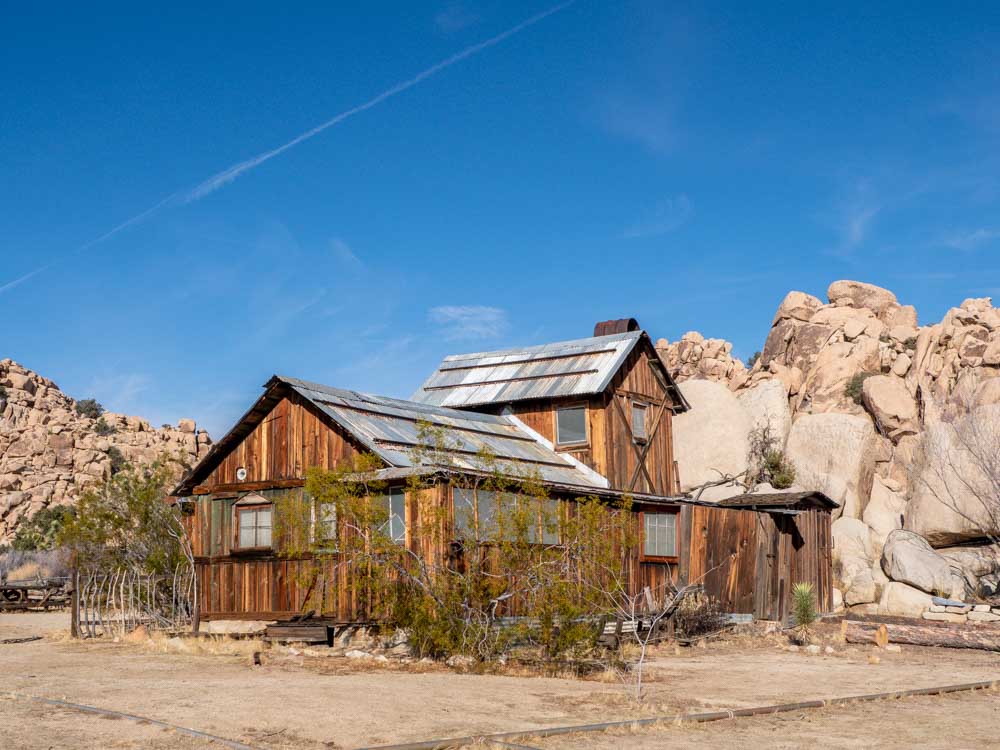
9. There’s a Murderer in Them Thar Hills
People actually lived in the forbidding Joshua Tree landscape. One of them was a murderer. Or was he?
That’s the quick version of William Keys life. The longer version is that he started out running scams at Scotty’s Castle, in Death Valley. After doing some time for that, he began working a mining operation in Joshua Tree. When the mine owner went bankrupt, Keys took the equipment as back pay and created his own homestead.
The Keys family was remarkably resourceful, running cattle, designing their own dam and growing crops. They ran their own mine for years and later earned income separating ore for others using a machine of Keys own making.
A long simmering feud with another homesteader landed Keys in jail again, this time for murder. He was acquitted on a technicality, but the tour guides will tell you with a wink and a nudge that everyone knows he did it. If you want to take the Keys Ranch tour, be sure to book ahead because they have limited slots.
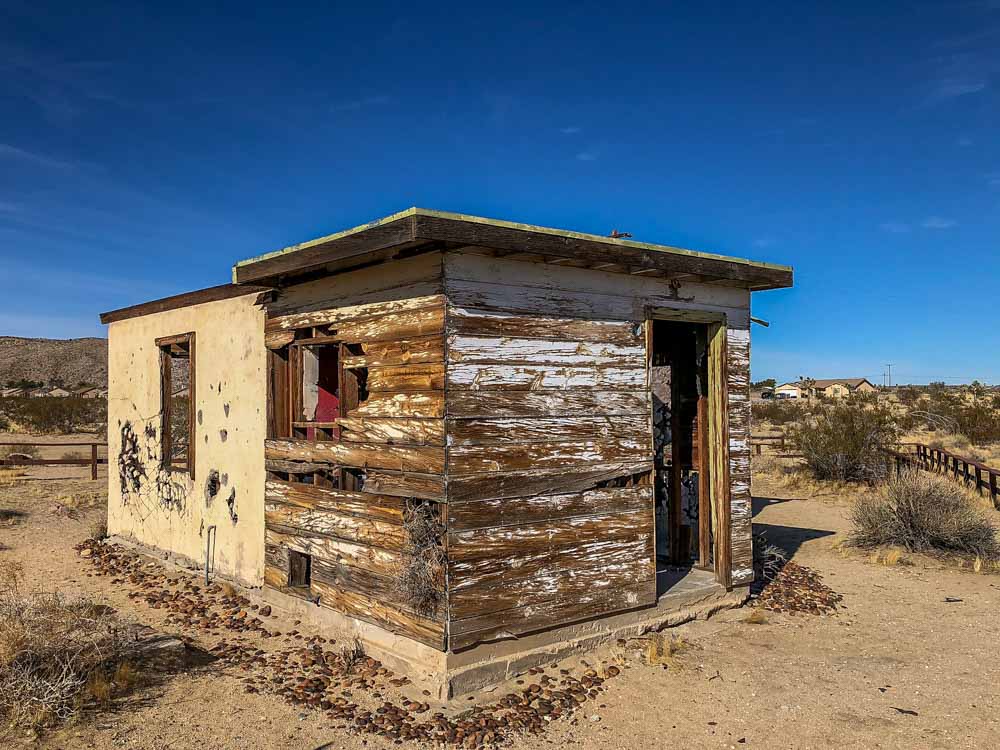
10. The Town Has Some Pretty Funky Sculptures
There are some seriously weird sculptures in town.
Joshua Tree National Park is amazing in on its own, but it’s also worth exploring Joshua Tree Town. A gallery scene arose in 29 Palms during the 1960s. Over the next few decades, galleries and studios spread along the highway 62 corridor, ensuring that the arts culture became firmly planted into the sandy soil of the Basin. There is a decidedly counter-culture element to the whole enterprise. You can tour the Noah Purafoy sculpture garden. It includes an array of found object sculptures, including some surprisingly graceful toilet sculptures.
Then there’s the Krblin Jihn Kabin, which is a broken down cabin that once housed a religious prisoner of war from a parallel universe. So…not…kidding. You have to see it to believe it. For more on these cool art projects, check out these things to do in Joshua Tree town.
Explore More in the Area
- If you are roadtripping, then be sure to make time for a two day itinerary in Death Valley National Park.
- If you are staying in Las Vegas, plan a day trip from Vegas to Death Valley.
- Drive a bit further south and explore the counter-culture in Slab City and nearby East Jesus sculpture garden.
Learn More about Joshua Tree with These Books
Desert Reckoning: A Town Sheriff, a Mojave Hermit, and the Biggest Manhunt in Modern California History, by Deanne Stillman: Donald Kueck – a troubled desert hermit, took his last stand, gunning down the local sheriff. Kueck took off into the desert,, kicking off the biggest manhunt in modern California history until he was finally killed in a “Wagnerian firestorm under a full moon”.
Hike the Parks: Joshua Tree National Park: Best Day Hikes, Walks, and Sights by Scott Turner: Experienced hiker and guidebook author and Southern California native Scott Turner has been exploring Joshua Tree National Park for years. This guide has 38 hikes, from 1-10 miles and at various elevations.
More Fun Facts
If you are a trivia nerd get more fun facts about Death Valley, Yosemite, Lake Tahoe, SF’s cable cars and the Golden Gate Bridge.
Share these Joshua Tree National Park facts with your friends on Pinterest:
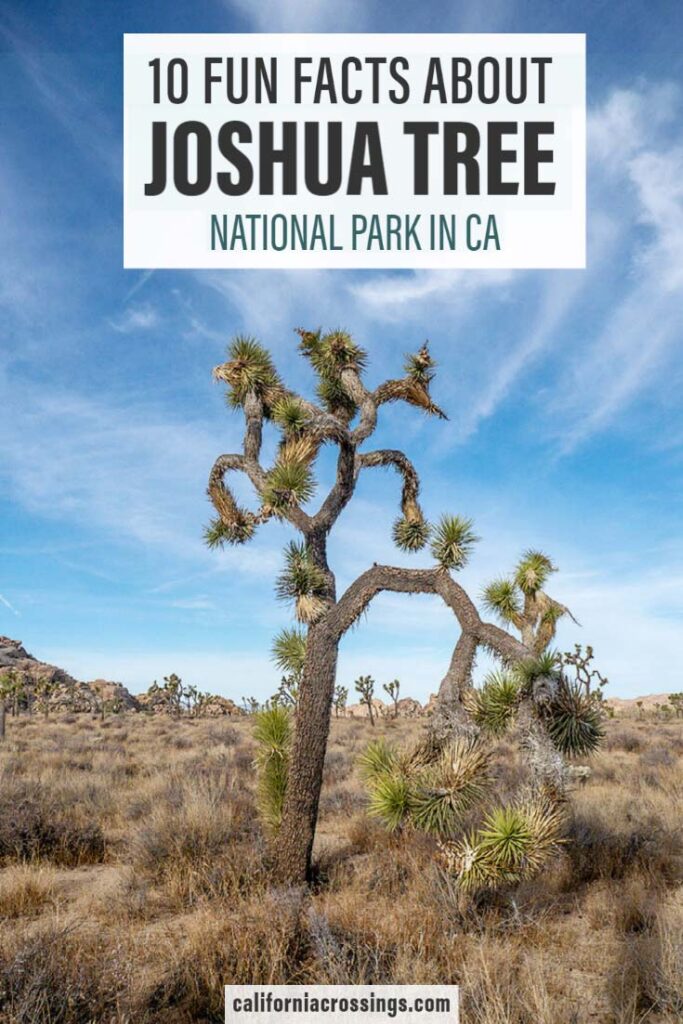


Cool information!
There was some awesome facts but I would also like to know about the animals there please!!!